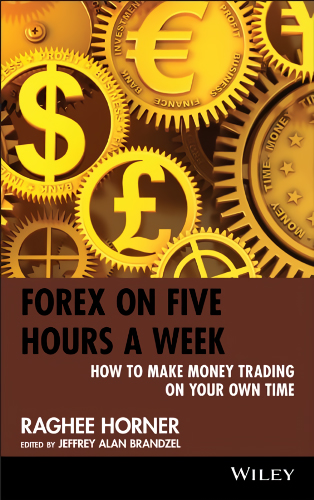CFD is a very risky asset to trade, but it can bring you a lot of profits if done correctly. In order to do that, you need to carefully choose the best CFD trading strategy.

There are many ways to trade an asset in the financial markets. One of them is through CFD or Contract for Differences. The underlying difference between CFD and other more straightforward products is that you don't own the asset you buy. Instead, you are only trading the contract. CFD products involve a contract between a buyer and a seller, where the buyer must pay the seller the difference between the current value of an asset and its value at contract time.
For example, if you trade stock CFD, that means you don't actually own the stocks. Trading CFD can be risky and complicated, which is why you should plan the best CFD trading strategy to mitigate the risk.
CFD trading strategy is the game plan. Think of it as instructions that you design to reach your goals. First of all, understand that strategies work by establishing a set of rules and procedures that you must follow. That being said, you can sometimes bend the rules according to the market conditions. Now, there are several most popular trading strategies that can be applied to CFD trading.
Contents
News Trading
One of the most popular CFD trading strategies is news trading. If you don't know what that is, it's practically building your strategy according to the news. You understand that the price movement of CFD can be influenced by important news releases. For this particular strategy, it is important that you are aware of upcoming events that could impact the value of the underlying asset. These strategies require a lot of time, dedication, and focus to follow the markets and try to outperform them.
In this strategy, you can trade before or after a news release. If you decide to open a position before the news release, the goal is to try to understand and anticipate traders' reactions to the upcoming release. This can be very risky as there is no exact way to know how the market will react. If this is not for you, then it's better to trade after the news since it allows you to go with the flow. However, it is important to use strict money management as the price can easily change direction.
Pair Trading
This strategy is one of the most popular among CFD traders. Pair trading is suitable for both high and low volatility, making it very versatile. In this strategy, correlations between the two assets are very important. That means you need to find the relationship between the price movements of two assets. The assets in question are usually the ones that are highly correlated but have started to become less correlated.
Here is one way to do it. First of all, you need to find a pair of assets that are highly correlated. Then, decide which is the weaker asset and which one is stronger. The next step is to open a short position on the stronger asset and go long on the weaker asset. The directions of the markets do not matter, because you will be winning with one position and losing the other one. The profit is based on the relative movement of the assets, so the more they diverge, the more you gain.
Technical Analysis Trading
Technical analysis is not a new thing in the world of trading. In fact, it is one of the most used strategies in financial markets. You can also use technical analysis for CFD trading. This strategy involves studying historical data as well as charts in order to make predictions on future price movements. You can also use the help of technical indicators to analyze the market better. The problem with this strategy is that it requires you to study how to use indicators, how to read the charts, and many more.
Trends
Another CFD trading strategy that you can consider is by watching the market trend. One way to do it is by using trend lines. It is very simple compared to other indicators and it involves drawing a straight line between two points on the price. This strategy allows you to find out whether the market is in a bullish or bearish trend. To show an increasing trend, draw a line between two lows while to show a decreasing trend, draw a line between two peaks. If the trend line has been touched by candlesticks, that means the trend has been validated.
Hedging
Hedging is a great way to protect your assets. You can think of it as insurance. If something bad happens to your assets, you still have protection. In finance, hedging is often used to reduce or completely negate risks from other investment vehicles. Retail traders are not the only one who uses hedging strategy, since big companies, big banks, hedge funds, and many other investment firms all use hedging to protect their investments too.
This strategy works well when you already have a diverse portfolio of stocks or CFDs that you are holding for the long term. For example, you are a gold investor and already own plenty of it. However, you are worried that the gold price might deplete due to a surge in the USD. Perhaps you don't want to close your positions in gold since you believe it might rise again in the future. To cover the temporary loss, you can open a short position on the gold CFD.
Useful Tips When Trading CFD
Besides good CFD trading strategies, there are other considerations before you start trading this product:
1. A Good Broker is a Must
Because of the risks, not all countries allow CFD trading. For example, CFD contracts are not allowed in the U.S. On the other hand, they are allowed in listed, over-the-counter (OTC) markets in many major trading countries. CFD trading itself is currently allowed in Australia. In fact, the Australian Securities and Investment Commission (ASIC) has announced some changes in the issue and distribution of CFDs to retail clients. Therefore, if you want to trade CFD, it is best if you find a CFD broker that has been regulated by ASIC.
Now, there are plenty of ASIC-regulated brokers. One of the best ones to trade CFD is IC Markets and there are several reasons why. To start with, IC Markets has a lot of choices of CFD instruments ranging from forex, indices, commodities, stocks, bonds, futures, and even cryptocurrency. You don't have to pay a commission fee for some of those instruments, which means the trading cost can be reduced. Not to mention, all of them are supported by the popular MetaTrader and cTrader platforms on both desktop and mobile devices.
IC Markets is an online forex broker operating under the company of International Capital Markets Pty Ltd. Traders under the Australian jurisdiction are provided with the trading service of IC Markets AU that is headquartered in Australia and licensed by the Australian Securities and Investments Commission (ASIC).
On the other hand, non-Australian traders who open an account in this broker are registered under IC Markets SEY that is based in Seychelles, and regulated under the Seychelles Financial Services Authority (SFSA). The dual operation is a result of the relatively new rules from ASIC that prohibit their regulated broker to offer trading services outside Australia.
Classified as an ECN broker, IC Markets provide clients with MetaTrader 4, MetaTrader 5, cTrader as platform trading options. This broker also follows market trends to include Cryptocurrencies as one of its products, enriching its already wide selection of trading assets that include Currencies, Indices, Metals, Energies, Softs, Stocks, as well as Bonds.
The minimum deposit in IC Markets is in the middle range compared to other ASIC-regulated brokers, as it reaches $200 for every client. Market analysis materials are also prepared regularly for trading insights on IC Markets's official website, proving their competence to serve their traders with important contents created by market experts that work specifically for them.
For payment methods, IC Markets allows funding and withdrawal via wire transfer, credit card, PayPal, Skrill, Neteller, FasaPay, UnionPay, as well as Bitcoin via BitPay. The more interesting aspect from this broker is its multi-base currencies that include USD, AUD, EUR, GBP, SGD, NZD, JPY, CHF, HKD, and CAD.
As the trading technology in IC Markets is highly equipped with co-located servers and extremely low latency (especially on cTrader), the broker is widely known for its capability in hosting traders with the special needs for high-frequency trading as well as scalping.
To sum up, IC Markets is a fitting destination for active traders looking for a well-regulated broker. IC Markets is also flexible in terms of base currency and payment methods, signaling their commitment to welcome traders beyond their home country. As of late 2019, IC Markets provided their website in 18 international languages including English, Korean, Indonesian, French, Spanish, Italian, Malay, German, and Chinese.
2. Leverage Can Be Dangerous
CFD is a leveraged product so traders can choose to boost their trading size for more than the required margin. The standard leverage in the CFD market is subject to regulations. While leverage can be good to amplify your profits with smaller capital, it can also trigger your losses much quicker. It's not bad to use leverage, but it is best to use it wisely with proper considerations.
See Also:
In general, trading CFD can bring you a lot of benefits since it has a lower cost than buying the asset outright. It also has a simple execution and the ability to go long or short. However, CFD comes with a set of risks. A good way to mitigate them is by applying good CFD trading strategies. You can pick the strategy based on what you think is appropriate according to the conditions or based on the instruments.
For instance, the busy forex market is always full of news every day every hour, so if you can keep up with the updates, you can try using news trading strategy. On the other hand, if you prefer analyzing the price with technical tools and indicators, it's better to plan your trades with technical analysis trading.

 Dedicated FREE FOREX VPS
Dedicated FREE FOREX VPS Free FOREX Virtual Private Server
Free FOREX Virtual Private Server MT4 Demo Contest, Get $500
MT4 Demo Contest, Get $500 Sign Up for an Account, Claim 60% Deposit Bonus
Sign Up for an Account, Claim 60% Deposit Bonus Free MT4/MT5 VPS 2024
Free MT4/MT5 VPS 2024 Send E-mail and Get Free Merchandise
Send E-mail and Get Free Merchandise $1K Refer a Friend Bonus for Pepperstone Pro clients
$1K Refer a Friend Bonus for Pepperstone Pro clients Maximize Your Earnings with 100% Deposit bonus
Maximize Your Earnings with 100% Deposit bonus Trade to Win, $5,000 Monthly Demo Contest
Trade to Win, $5,000 Monthly Demo Contest Claim 30% + 15% Deposit Bonus from LiteFinance
Claim 30% + 15% Deposit Bonus from LiteFinance












